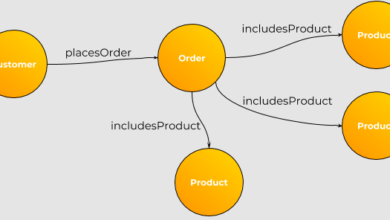How Remote Medical Scribes Are Revolutionizing Patient Care

In today’s changing healthcare landscape, efficiency, and precision play roles, and introducing the concept of scribing is a revolutionary tool for healthcare professionals aiming to streamline documentation processes and prioritize patient care. This article delves into the realm of scribing, highlighting its advantages and explaining why it has become an invaluable asset in contemporary medical settings.
What is Remote Medical Scribing?
DocVA Remote medical scribing is a solution that enables healthcare providers to assign their documentation responsibilities to trained individuals working from a location. Unlike in-person scribes, remote scribes operate remotely, often utilizing secure technology to access patient records and aid in documentation tasks.
This method facilitates the maintenance of precise medical records and allows physicians more time to focus on patient interactions. Remote medical scribes listen to conversations through audio or video channels and input relevant details into the electronic health record (EHR) system.
The Progression of Medical Scribing
Medical scribing has evolved significantly from its origins. Initially, scribes were individuals in examination rooms who recorded notes during consultations. These conventional scribes helped physicians handle paperwork efficiently and maintain accurate records.
With the progress of technology, the field of scribing has evolved. The introduction of Electronic Health Record (EHR) systems has enabled scribing, allowing scribes to work from anywhere. This advancement has made scribing more efficient and accessible, reducing the necessity for presence in the exam room.
Advantages of Remote Medical Scribing
Remote scribing offers benefits beyond convenience. Here are some key advantages that contribute to its value in healthcare practices;
Cost Efficiency
An advantage of medical scribing is cost savings. Outsourcing documentation tasks to a virtual medical scribe in healthcare facilities can lower costs by hiring and training internal staff. This enables better resource allocation and enhanced financial effectiveness.
Increased Productivity
Remote medical scribes help enhance the productivity of healthcare practices. Physicians can concentrate on care without being weighed down by documentation responsibilities, which leads to shorter appointment times, reduced patient wait times, and an overall boost in practice efficiency.
Enhanced Patient Care
Healthcare providers can devote time and attention to their patients by alleviating burdens. This translates into improved patient outcomes, higher satisfaction rates, and stronger patient-provider relationships.
Remote medical scribes play a role in ensuring the documentation of all medical records, which is essential for the continuous care of patients.
How Remote Medical Scribing Functions
Scribing relies on secure technology and well-established processes to maintain smooth functioning. Here is an outline of how it operates:
Secure Audio/Video Feeds
Remote scribes access interactions through audio or video feeds. This enables them to listen to consultations in time and accurately document information. Measures are in place to safeguard patient privacy and adhere to regulations.
Electronic Health Records (EHR) Systems
Scribes utilize EHR systems to provide patient details, update medical records, and ensure accurate data documentation. These systems are user-friendly and efficient, facilitating the management of volumes of information.
Real-Time Recording
Time documentation is a component of remote medical scribing. Scribes listen to interactions as they occur and promptly record the information. This guarantees that records remain current and precise, minimizing the likelihood of errors or omissions.
The Importance of Remote Medical Scribe Role
Remote scribes hold a position in healthcare practices. Their duties go beyond taking notes and encompass:
Accurate Recording
A remote medical scribe ensures that all patient interactions are documented precisely. They record patient history, examination results, treatment plans, and follow-up instructions.
Management of Electronic Health Records (EHR)
Remote scribes are skilled in utilizing EHR systems to handle records. They. Manage these records to guarantee that all information is well organized and readily accessible for healthcare providers.
Administrative Assistance
Apart from documentation, remote scribes often offer support in tasks. This may involve scheduling appointments, overseeing referrals, and aiding in billing procedures. Their presence contributes to streamlining a healthcare facility’s workflow.
Illustrative. Endorsements
The positive effects of scribing on healthcare facilities can be best illustrated through practical instances and endorsements. Here are some case studies that showcase the advantages;
Case Study 1: Enhanced Efficiency at a Busy Clinic
A bustling primary care clinic introduced medical scribing to tackle the increasing workload. In a matter of months, the clinic experienced enhancements in efficiency. Appointment durations decreased, patient wait times were reduced, and physicians expressed feeling pressure and being more focused on well-being.
In a case study, a cardiology specialty practice successfully implemented medical scribes into its daily operations. Patients were pleased with the increased attention they received from their healthcare providers, leading to increased satisfaction rates. This implementation improved records’ accuracy and resulted in better patient outcomes and more streamlined follow-up procedures.
Dr. Smith, from the field of Family Medicine, shared his experience with medical scribing, emphasizing how it has revolutionized their practice by enabling them to deliver more personalized care while maintaining precise documentation. The team’s efficiency has. Patients are reporting levels of satisfaction.
Looking ahead, the future of scribing appears bright, with various trends suggesting ongoing growth and advancement:
Advancements in Technology Integration: With continuous technological progress, remote medical scribing is expected to become even more efficient. Incorporating intelligence (AI) and machine learning algorithms is anticipated to improve the accuracy and speed of documentation.
Expansion into New Medical Specialties: While remote medical scribing is prevalent in primary care settings, its adoption is projected to expand into diverse specialties like dermatology, orthopedics, and pediatrics. Specialists in these fields stand to benefit from the efficiency and precision that remote scribes offer.
Remote medical scribing has become increasingly popular, leading to the development of training programs. These programs aim to equip scribes with the skills and knowledge required for their roles. Ongoing education and certification opportunities will further enhance the quality of scribing.
Read also: The Unique Men’s Wedding Band To Elevate Your Style
In conclusion
Remote medical scribing revolutionizes healthcare by boosting efficiency, cutting costs, and enhancing patient care. By leveraging the assistance of scribes, healthcare professionals can concentrate on delivering care to their patients.
By incorporating scribing into their practices, healthcare providers can streamline workflows, lessen administrative burdens, and ultimately enhance patient outcomes. The future of scribing holds promising prospects, and those who embrace this innovative solution will surely see positive results.
Exploring the benefits of medical scribing is highly recommended for healthcare professionals seeking to optimize their practice and elevate patient care standards. Embrace this tool to witness its impact on your healthcare practice.
Secure your practice’s online success with expert medical search engine optimization from SEOEchelon.com. Discover the details now!




